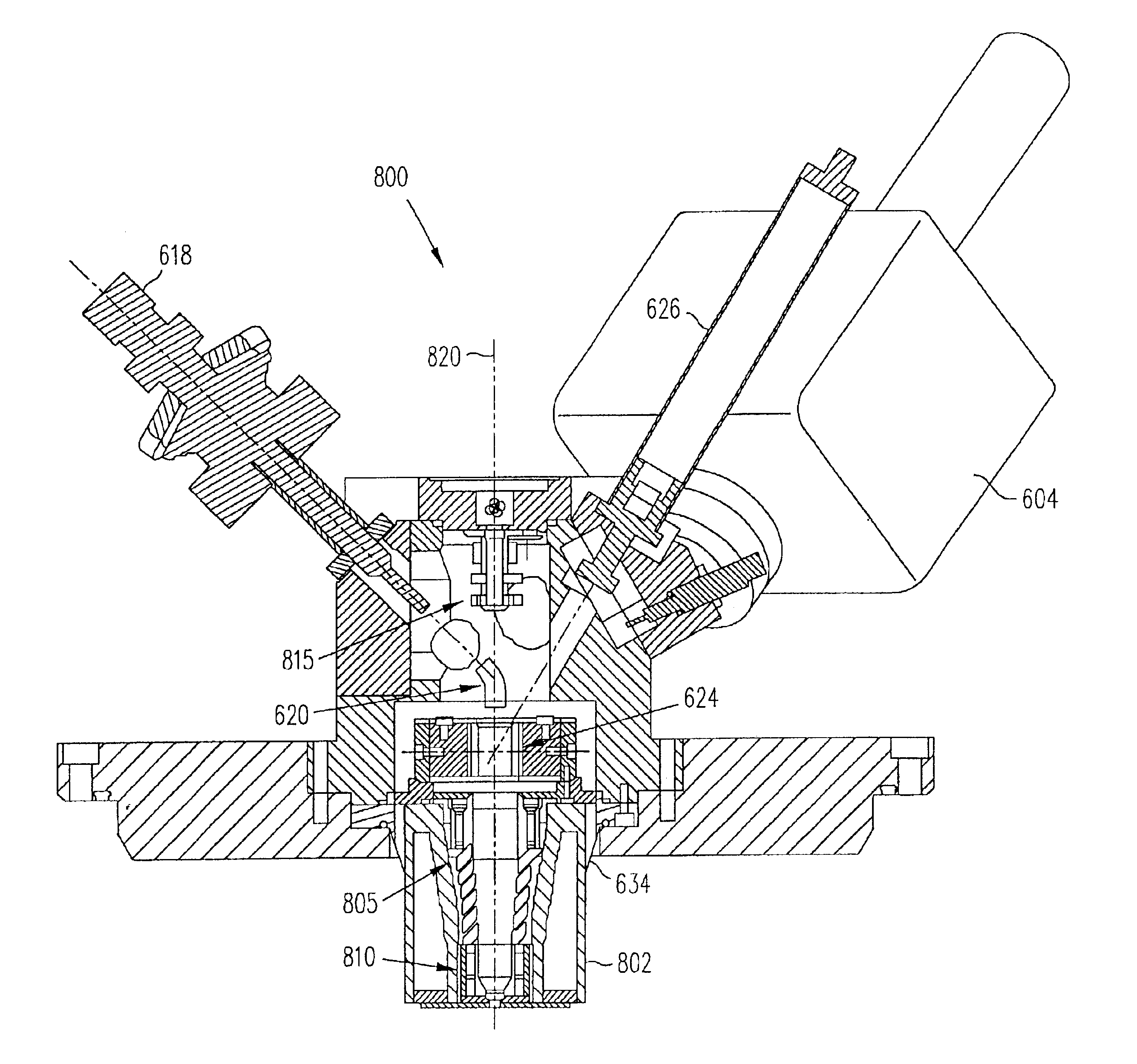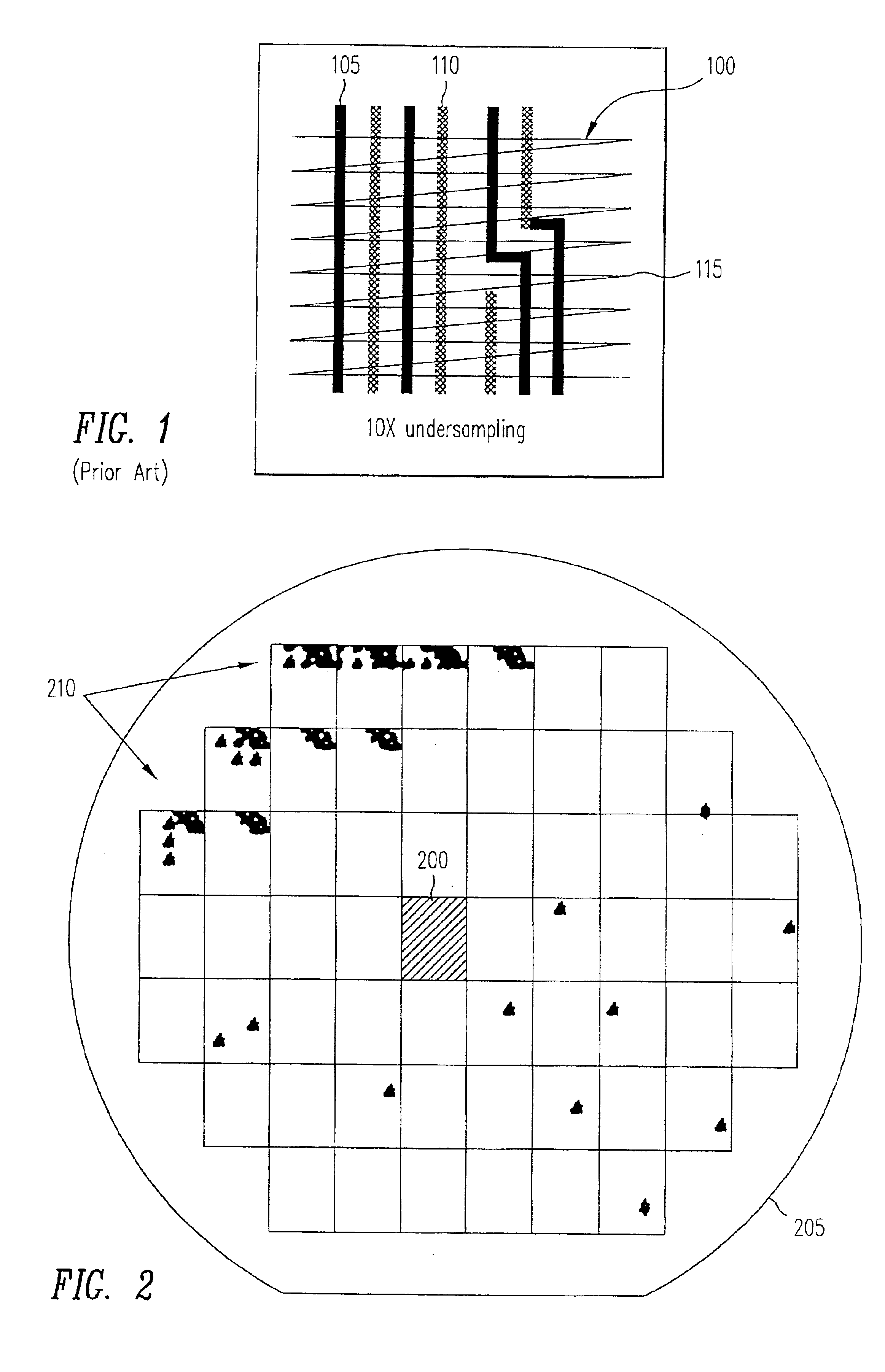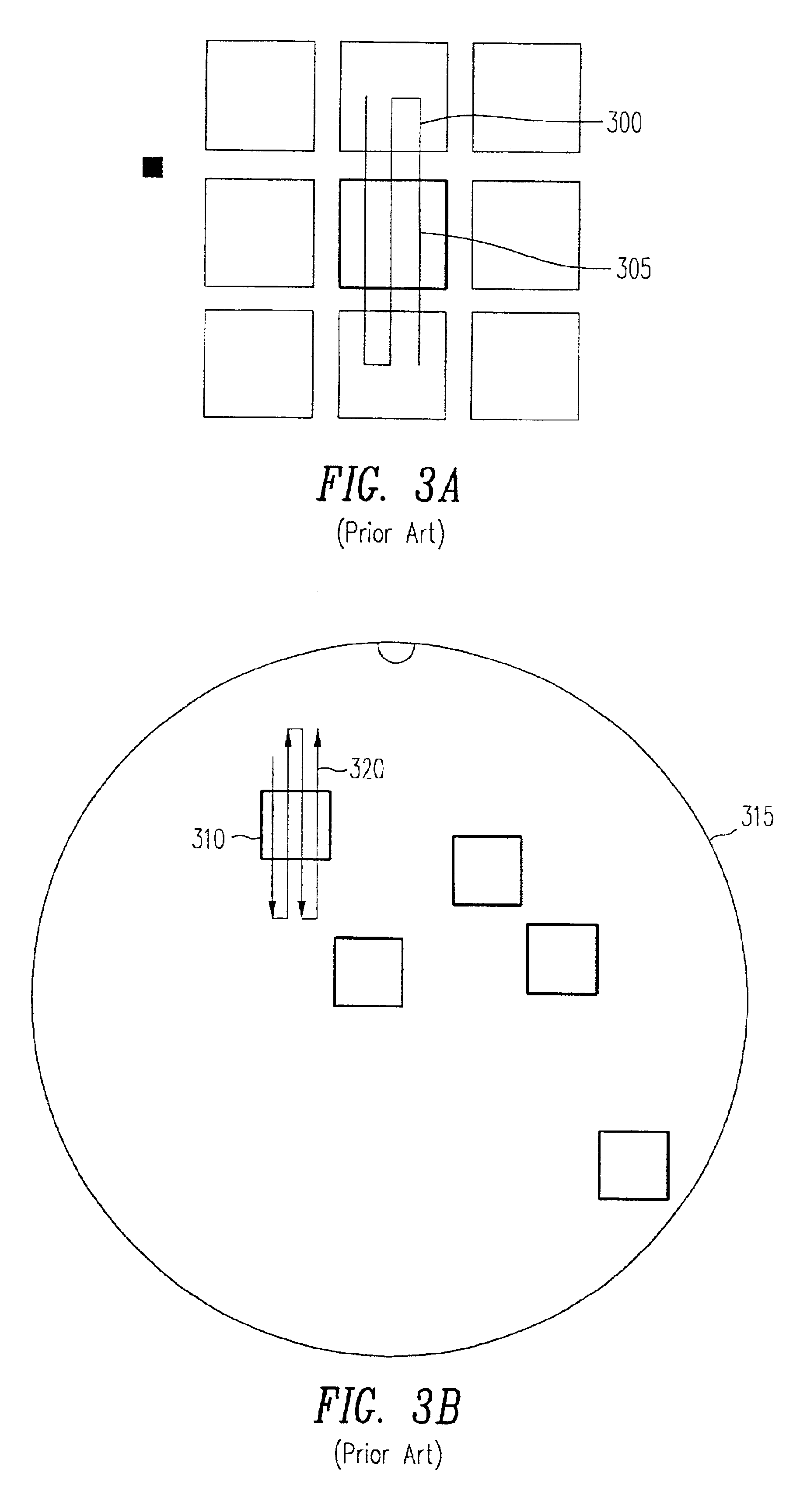Detection of defects in patterned substrates
- Summary
- Abstract
- Description
- Claims
- Application Information
AI Technical Summary
Problems solved by technology
Method used
Image
Examples
example 1
[0043]The following typical parameters are assumed for “Case 1” and “Case 2”:[0044]die size=1 cm2 [0045]pixel resolution=25 nm[0046]pixel rate=100 MHz[0047]FOV of small-FOV lens 25 μm×25 μm (1,000 pixels per line, same as the sub-FOV of large-FOV lens)[0048]FOV of large-FOV lens=1 mm×1 mm[0049]time for a single stage move=1 second[0050]time for scanning stage to reverse direction and re-accelerate to constant speed=˜3 seconds
[0051]Case 1: Time to acquire image of a single die using large FOV lens with step and image mode (consistent with the present invention)
[0052]
Stage-Move Overhead:100 stage moves = 100 secondsData acquisition time:acquire 16 × 1010 pixels =1600 secondsTotal time required:stage moves + acquisition =1700 secondsEfficiency1600 / 1700 = 94%(data acquisition time / total time):
[0053]Case 2: Time to acquire image of a single die using small FOV lens with a continuously scanning staging (prior art)
[0054]
Stage-Move Overhead:time to reverse stage2400 secondsdirection & re-ac...
example 2
[0055]As indicated in Table 1 below, this example assumes a 1 mm×1 mm FOV for the large-FOV objective lens and a 40 MHz pixel-data acquisition rate. The time for the stage to move and settle is conservatively assumed to be 1 second (typically a well-designed stepping stage would move and settle in <0.5 second). With these assumptions, the stage move overhead represents ˜3% of the total image acquisition time. That is, an ideal stage which would move and settle instantaneously would only result in only a ˜3% through-put increase. Thus the stage-move overhead is of little consequence.
[0056]
TABLE 1Critical0.18 μmNo pre-chargeDimension(CD) =Pixels / CD =4Data rate =4.00E + 07HzPixel size =0.045 μmAvg. =2Pixels / cm =222222Time / sub FOV =0.05 sPixels / cm =49382716049Beam vector200 μstime =Total time / sub0.05 sFOV =FOV(per side) =1 mmTinx / FOV =24.8 sFOV / cm2 =100Pixels / FOV line =22222Stage move / settle1 stime =Pixels / sub FOV 1000Overhead0.15line =(focus, etc) =Sub FOV / line =22.2Total time / FOV =25....
PUM
 Login to View More
Login to View More Abstract
Description
Claims
Application Information
 Login to View More
Login to View More - R&D
- Intellectual Property
- Life Sciences
- Materials
- Tech Scout
- Unparalleled Data Quality
- Higher Quality Content
- 60% Fewer Hallucinations
Browse by: Latest US Patents, China's latest patents, Technical Efficacy Thesaurus, Application Domain, Technology Topic, Popular Technical Reports.
© 2025 PatSnap. All rights reserved.Legal|Privacy policy|Modern Slavery Act Transparency Statement|Sitemap|About US| Contact US: help@patsnap.com



